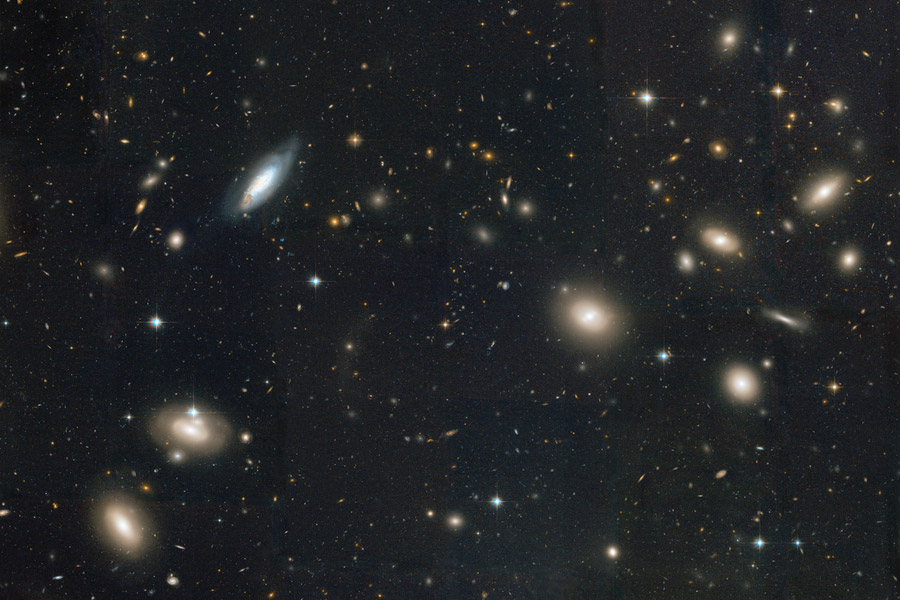Coma Legacy Survey with the Hubble Space Telescope

The cluster of galaxies that first led astronomers to identify the presence of dark matter is to come under the spotlight again using the Hubble Space Telescope. Hubble is observing the Coma cluster of galaxies, located approximately 280 million light years from Earth.
David Carter, Professor of Observational Astronomy at Liverpool John Moores University, who is leading the project, said: "In the 1930s astronomer Fritz Zwicky analysed the orbits of a group of galaxies in the Coma Cluster and found that they were moving so fast that they ought to have been flung apart. The reason they don't is because they are surrounded by a vast halo of invisible matter, known as dark matter. We now think that up to 85% of the Universe is made up of this dark matter but we can't see it because it gives off no light or heat, and it appears to interact with other matter only gravitationally. By harnessing the power of the Hubble Space Telescope, we may be able to shed some light on this 'dark matter' and the role it plays in the evolution of the Universe."
The Coma survey is a major international project involving a team of 33 scientists drawn from across Europe, North America, Asia and Australia. The majority of scientists involved have already studied the Coma cluster using ground-based optical and radio telescopes, and with space missions which detect X-ray, Ultra-violet and Infra-red light from the cluster. However, while these telescopes can detect faraway objects in the Coma cluster, they can't tell us much about the structure of its estimated 10000 galaxies. Thanks to Hubble's Advanced Camera for Surveys or ACS, which operates above the distortions caused by the Earth's atmosphere, the astronomers will now be able to study in exquisite detail features visible in ultraviolet and infrared wavelengths.
The Coma survey team is using Astro-WISE to explore in detail the morphologies of the thousands of galaxies present on the ACS images. Astro-WISE allows the team members to share instantaneously from North America to Australia their work using web interfaces which display the results obtained within Astro-WISE. This way the survey team can closely collaborate and make progress not hampered by the thousands of kilometers between them.
See these local pages on the Come Legacy Survey for further details.
Courtesy David Carter (John Moores University), Shonagh Wilkie (PPARC) and STScI

